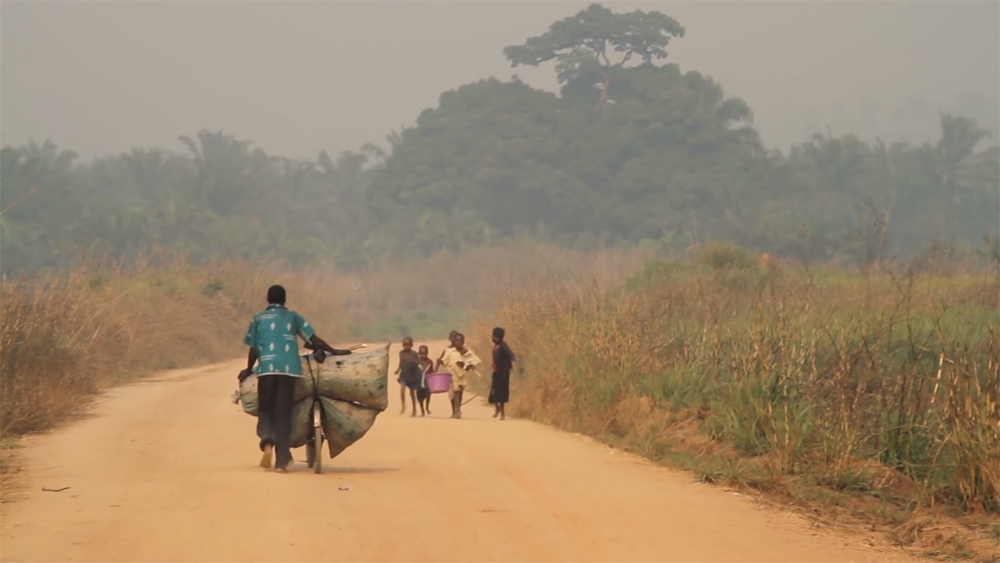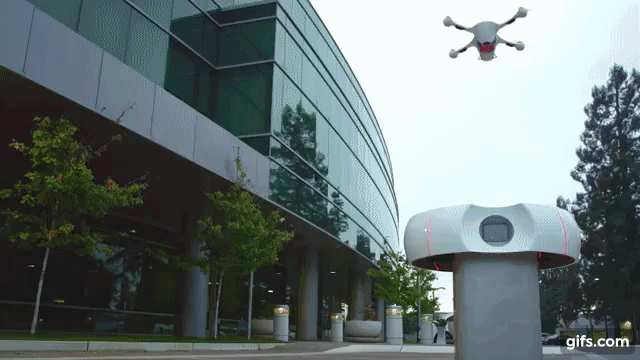How droning in Africa saves thousands of lives

Recently, the company Wing (formerly Google X), which plans to deliver goods with drones, for the first time in the United States issued the status of an air carrier. Meanwhile, a similar service is already working successfully in much more difficult conditions! In impenetrable forests and sweltering heat. Something that truly saves the lives of thousands of people every day. At the end of April, Zipline launched its service in Ghana - drones that deliver medicines with great accuracy to hospitals across the country. 12 million people rely on the new service. There is hope for such a system, there may be a future in the regions of Russia.

All over the world, cars are most often used to deliver vaccines, medicines and tests - both to patients and between medical centers. They carry temperature-sensitive samples and medicines, blood, organs for transplantation, and everything that works for only a few hours. If a vehicle with such a load gets stuck in traffic jam or off-road, the load may become unusable. Even worse, if the delivery goes to distress areas, when the bill goes for minutes. There is no direct road there - it is flooded, destroyed or goes through forest fires. If even rescuers cannot get close to people, what is the chance of an ambulance or medication?
Therefore, in this area, even more actively than in the case of goods, delivery is developing with the help of drones. The fact that it can be a little more expensive than a truck full of dumps is not important here, the main thing is speed, accuracy and throughput. Drones can be used in countries and regions where there are no roads at all. They allow you to deliver fragile and time-sensitive goods.

A few years ago, a test program for the delivery of medicines and blood samples by drones was launched in Rwanda. And now, after several years of testing, the same startup, Zipline, is expanding to another African country with similar problems, Ghana. The plan is to save at least several hundred thousand people in the coming years.
How it works
Zipline, a San Francisco-based drone developer, has been improving its Rwandan system for three years, modifying drones, and finding ways to scale the project. Last year they created the Zip 2, a drone that Time has added to its list of “Best Inventions of 2018”. The site in Rwanda is now sending blood products to 25 hospitals located in the most inaccessible areas of the country. Zipline managed to reduce the delivery time from two hours to 20 minutes, and thus reduce the number of damaged goods by 95%.
Now the project goes to a whole new level. With the support of the Ghanaian government, Zipline will manage 30 drones from four distribution centers. They will deliver emergency vaccines, blood and life-saving medicines every day to 2,000 clinics and hospitals across the country.
Zipline founder Keller Rinaudo in an interview with reporters says:
We will make 600 flights a day, delivery - for 12 million people. Our goal is that each patient is 15-45 minutes from any product he needs, no matter how rare he is.

Happy Keller Rinaudo
Ghanaian President Nana Akufo-Addo, who attended the first launch of the Zippline drone, said:
Not a single person in our country should die due to the fact that blood or medicine was delayed on the way to the hospital. Therefore, we are launching such a delivery service. All of you, wherever you live, have the right to the medicines necessary for life.

At the launch ceremony
Zipline drones deliver more than 150 emergency vaccines, drugs, and blood bags for transfusion. Coverage in the future - up to 22 million people. This is the largest drone delivery system in the world. She was impressed even by Bill Gates, one of the main initiators of vaccination projects in Africa.

Drone Launch Control

A medical capsule that is loaded into the center of the drone
Zipline uses a fleet of autonomous drones - Zipov, which fly out of bases called Nests. Each Nest can store up to 15 Zips. The launch is carried out by a catapult, navigation is carried out by GPS. The device weighs 10 kg and can carry up to 1.5 kg. Medications are dropped with an attached parachute to a special point near the hospital (accuracy - within a few meters). Upon returning to the base, the drone clings to a wire stretched in the air, which acts as an anchor and lands the drone on a pillow spread on the ground. The flight range of each device is more than 120 km (60 km there, and 60 km back).

The Zipline contract is designed for four years, Ghana will pay for each successful flight. Total cost of the project will be about $ 12.5 million. According to the website of the company, committed almost 14,000 deliveries.
The company's future plans include, for example, helping to avoid the thousands of annual pregnancy-related deaths that are completely preventable if donor blood is delivered on time. Also, recently, researchers found that drones can deliver organs for transplantation: during transportation, tissues are not damaged. The company intends to expand its activities and obtain work permits in other countries (in the USA they should give it already in the coming months) in order to permanently change the medical product delivery industry.
Successful examples
Zipline was founded by Keller Rinaudo in 2014. Since then, the startup has raised $ 41 million from investors such as Google, Sequoia, Microsoft co-founder Paul Allen and Yahoo co-founder Jerry Young. The company develops its own drones, launch and landing systems, as well as software for logistics.

Rinaudo says:
The economy here is very simple. We use small, electric, fully autonomous machines to aim the necessary things. It is simply more efficient than the analog delivery method for such items.

Keller Rinaudo at TED
Earlier, a similar project (only on a much smaller scale) was launched in Switzerland: the autonomous network developed by Matternet allows drones to deliver medicines, blood samples, biological materials and other cargo between hospitals in some large cities.
Their main innovation is Matternet Station. When the drone lands, this station fixes it, charges and unloads the contents (people can place and pick up cargo, gaining access using QR codes). In addition, such stations have mechanisms for regulating drone routes. According to the head of the company Andreas Raptopoulos, in the cities of Switzerland, an autonomous network allows drones to deliver drugs within 30 minutes. At the same time, there are also not so many drones working there: only one or two per station.
In late March, in collaboration with the same Matternet, the American UPS shipping service launched the same system in the United States. So far, delivery only works in Raleigh, North Carolina. Unmanned aerial vehicles cruise along a predetermined route between hospitals and medical centers. Matternet drones carry payloads weighing up to five kilograms over a distance of 20 kilometers. So far, this system has been used in addition to regular car delivery.

At the same time, delivery by drones is surprisingly safe. Tests of the same Wing from Google in the United States showed that it is several orders of magnitude safer for people than courier delivery of goods by car. During the research, more than 70 thousand test flights and more than 3000 test deliveries to the doorsteps of the houses were carried out - without a single unforeseen situation or accident. Avoid drones (Wing has a wingspan of 1 meter!), And in case of loss of control, they can land safely on the spot.

Shipping Wing
Such drones could be useful in Russia. Their “all-terrain” is ideal for remote areas and our off-road. There are no more worthy hospitals in many villages and even small cities, and drones can help with the delivery of vaccines and medicines, and even organs for transplantation. How do you like this idea? Moreover, a couple of days the Ministry of Transport proposed to allow free flights of drones in Russia at an altitude of up to 150 meters.
However, in the United States, according to the Wall Street Journal, in the next couple of years, federal authorities do not expect mass licensing of such a delivery service. Some problems remain unresolved. Including noise, confidentiality and the need to manage a new type of air traffic. If drones in the air become a mass phenomenon behind which companies stand, additional rules must be established for them to avoid collisions, conflicts and other unforeseen situations.

